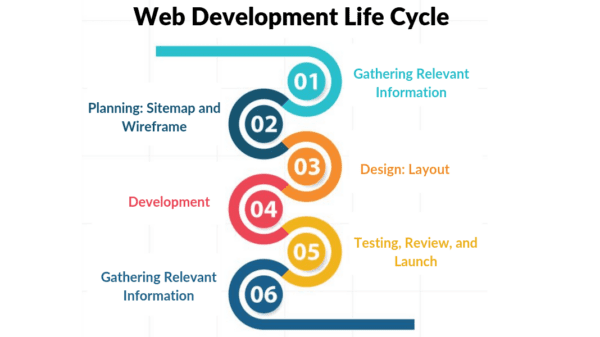The web world has seen the fall and rise of several good programming languages and development frameworks. Objective C, Pascal, ALGOL, and COBOL are some names that remind us of the fact that the IT industry is transitional. To survive here, technology needs to be adaptable, functional, and evolutional. Perhaps that’s why Angular has managed to survive, grow, and gain attention in the industry.
Angular is a highly competent web framework that is built on TypeScript. Apart from its technical superiority, it is known for its robustness, agility, up-to-the-minute entailed documentation, and massive community, which ensure its continual improvement. But keeping aside all its features, there’s one thing that sets it apart; its ability to enable users to establish and experience a seamless connection with the systems or apps, and in the technological world, that’s what matters the most.
Another distinguishing trait of Angular is its marvelous scalability, that is, its ability to scale and grow any application according to its needs. From a simple single-page application to a complicated enterprise app, everything can fit in, and that’s what this article is all about.
What follows next are five different types of applications that can be built with Angular. But before that, we take a sneak peek at the reasons why Angular should be the chosen one and a few prominent differences between its predecessor and the current version.
Why go for Angular Web Development?
The right question to ask is, “Why not?” There are multiple reasons why one should opt for Angular web development, but the major ones are featured below.
Cross-platform
Whether you want a native mobile application or a native desktop application, Angular is capable of developing platforms across all major operating systems, browsers, mobile devices, and servers.
Fantastic Tooling
Angular empowers web development with its fantastic tooling, which includes declarative templates, a wide range of components, and Angular-explicit help for almost all notable IDEs, housing intelligent features like code completion and feedback.
Code Generation
Angular allows developers to generate optimized code that is compatible with JavaScript virtual machines. The code generation feature offers the advantages of hand-written code and enhances productivity.
A Huge Collection of Libraries
Angular houses a well-integrated and well-maintained collection of libraries that cover a wide range of features, including client-server communication, routing, adaptable UI components, form management, and a lot more.
Quick Development
Angular is a component-based framework with features like two-way data binding and automatic code splitting. It speeds up the web development process, leading to better applications in less time.
The popularity of Angular web development is further highlighted by its elite list of users, which includes Gmail, Microsoft Xbox, Forbes, The Guardian, and UpWork. No wonder Angular is referred to as “the modern web developer’s platform.”
The Difference Between Angular and AngularJS
Before hopping on to our app types built through Angular web development, it’s necessary to point out the subtle differences between Angular and AngularJS. The very first one is that the former is TypeScript-based and an evolved version of the latter, while the latter was JavaScript-based.
Angular was re-made by the same team that created its JS version. Both are front-end web frameworks and consist of MongoDB databases, but there are dissimilarities between the two, and one should take note of those, especially during the app-building process.
- In Angular, several core functionalities have been shifted to modules.
- Post-conversion to TypeScript, Angular now has features like annotations and static typing.
- Angular has different expression syntax for property and event binding.
- Angular’s primary architectural feature is based on the use of a hierarchy of components instead of controllers.
Now let’s finally have a look at the five most prominent types of applications for which one should engage in Angular web development services.
Check out the top 5 types of apps to be built with the Angular Web Framework:
Mobile Applications
Angular is cross-platform in nature, which makes it ideal for the development of hybrid mobile applications. When put together with Ionic or NativeScript, it can give rise to decent mobile apps with a few tweaks to the front-end code. This means that if you work with the right development partner or have the right tools (if you are a developer yourself), you can have your long-desired mobile app in a matter of days. Angular can also be combined with Apache Cordova to build intense hybrid applications.
Single Page Application (SPA)
When it comes to the creation of SPAs, Angular is one of the most extensively used frameworks. It is known to significantly improve the user experience by enabling users to access only the necessary parts of the application. While using a SPA, a web browser dynamically rewrites the current page with the new data. Angular’s efficient data management system along with routing makes it an ideal platform for the same.
Enterprise Applications
Looking at Angular’s clientele, one can surely assume its popularity with big organizations. Developers often prefer to stick with Angular for the development of large, complex, and resource-filled enterprise web apps because of its unified structure, MVC architecture, its ability to cater to huge data requirements, and, of course, security protocols.
Its scalable infrastructure and Google backup add to its many benefits, assuring enterprises of its dependability. Reusable components are also responsible for their popularity as a web framework for enterprise apps.
Progressive Web Applications (PWAs)
PWAs have gained momentum owing to their loading speed, responsive design, and offline access. Angular offers modern development tools which are used to build PWAs with high-performance capabilities, zero installation requirements, and the capability to operate offline. Angular enables PWA development through JSON configuration, which means that one does not need to build an entire app from scratch.
UI Animation for UIs
Animations can empower web apps through attractive visuals packed with clear messages. They make page transitions smooth and intuitive. Angular is filled with resourceful APIs which facilitate the hassle-free creation of animations. It enables developers to animate timelines of coordinated and complex sequences, create reusable animations, and route transition animations. With the help of Angular’s animated interfaces, companies and individuals can gain a competitive edge for their applications.
Take Away
Angular has a lot of potentials, but the essence lies in its rightful use. One needs to know the why, how, and when to use this robust web framework. Although its intensive documentation is enough for a developer to get started, some professional help certainly doesn’t hurt.
Hiring the expertise of experienced professionals is a wise option, especially when someone chooses to work with an ingenious platform like Angular. So team up with an established Angular web development company and prepare to set sail towards the dream of your pioneering app.
Albert Smith is Digital Marketing Manager at Hidden Brains, a leading software development company specializing in mobile & web app development services. He provides innovative ways to help tech companies, startups and large enterprises build their brand.

























































































































































































